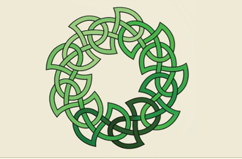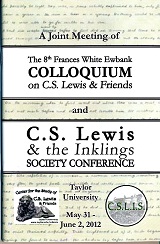Event Title
Academic Paper Session 5-A
Location
Rupp 203
Start Date
2-6-2012 1:45 PM
Description
"Angel and Victim: the Victorian Literary Child" - Elizabeth Coon
The Victorians felt the need to protect the innocent from corruption, as demonstrated by the writings of George MacDonald, whose child heroes remain unsullied despite their battles with and triumphs over evil again and again. An examination of MacDonald's writing, particularly At the Back of the North Wind (1871), alongside pivotal Victorian writers like Lewis Carroll and Christina Rossetti in their idealization of the child illuminates the Victorian portrayal of children both as an angel standing in the gap between humanity and overwhelming evil and a frail doll which must be guarded zealously. MacDonald's portrayal of the child thus emerges as a glimpse into the artistic Victorian mind - one urgently concerned with the line protecting the good from the evil.
"The Wise Woman as an Agent of Identity in The Wise Women by George MacDonald" - Rachel Johnson
In this paper I investigate the Wise Woman as an agent of identity in terms of Aristotelian and modern philosophies of identity primarily drawing upon the work of Alistair McIntyre. I address the question 'how much choice does Rosamond have in the transformation process' and examine the part played by increasing self-knoweldge and personal will, given the strength of influence employed by the Wise Woman in shaping Rosamond's perception of herself.
The parallel journey of Agnes, a shepherd's daughter, is briefly mapped against Rosamond's progress in order to demonstrate choice. I conclude that Rosamond's choice is made within chosen limitations.
"The Divine Child in George MacDonald" - Bonnie Gaarden
My thesis is that MacDonald uses the image of the Divine Child in two of his fantasy works to represent God as the Ground of Being. The paper will first present MacDonald's view of the "true childhood" as central to both divine and human nature, then examine a structural parallel common to "The Golden Key" and The Wise Woman. In each story, a protagonist confronts three symbolic figures of descending ages, culminating in the figure of the child. The paper will explicate these all of these figures as images of God and of how God may be experienced.
Event Type
Paper
Link to Papers
Angel and Victim: the Victorian Literary Child (Not available)
The Wise Woman as an Agent of Identity in George MacDonald's Story The Wise Woman
The Divine Child in George MacDonald (Not available)
Academic Paper Session 5-A
Rupp 203
"Angel and Victim: the Victorian Literary Child" - Elizabeth Coon
The Victorians felt the need to protect the innocent from corruption, as demonstrated by the writings of George MacDonald, whose child heroes remain unsullied despite their battles with and triumphs over evil again and again. An examination of MacDonald's writing, particularly At the Back of the North Wind (1871), alongside pivotal Victorian writers like Lewis Carroll and Christina Rossetti in their idealization of the child illuminates the Victorian portrayal of children both as an angel standing in the gap between humanity and overwhelming evil and a frail doll which must be guarded zealously. MacDonald's portrayal of the child thus emerges as a glimpse into the artistic Victorian mind - one urgently concerned with the line protecting the good from the evil.
"The Wise Woman as an Agent of Identity in The Wise Women by George MacDonald" - Rachel Johnson
In this paper I investigate the Wise Woman as an agent of identity in terms of Aristotelian and modern philosophies of identity primarily drawing upon the work of Alistair McIntyre. I address the question 'how much choice does Rosamond have in the transformation process' and examine the part played by increasing self-knoweldge and personal will, given the strength of influence employed by the Wise Woman in shaping Rosamond's perception of herself.
The parallel journey of Agnes, a shepherd's daughter, is briefly mapped against Rosamond's progress in order to demonstrate choice. I conclude that Rosamond's choice is made within chosen limitations.
"The Divine Child in George MacDonald" - Bonnie Gaarden
My thesis is that MacDonald uses the image of the Divine Child in two of his fantasy works to represent God as the Ground of Being. The paper will first present MacDonald's view of the "true childhood" as central to both divine and human nature, then examine a structural parallel common to "The Golden Key" and The Wise Woman. In each story, a protagonist confronts three symbolic figures of descending ages, culminating in the figure of the child. The paper will explicate these all of these figures as images of God and of how God may be experienced.


